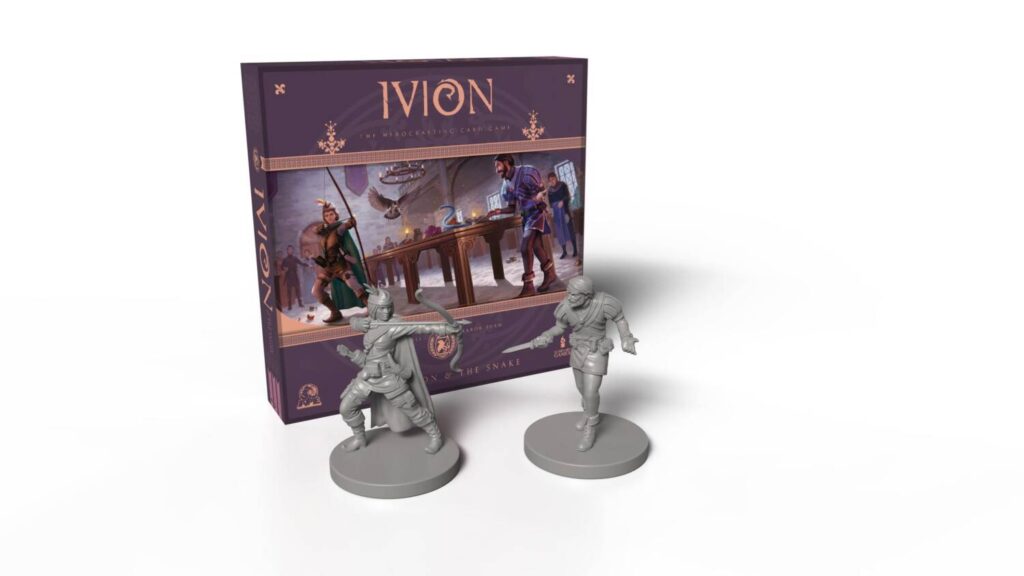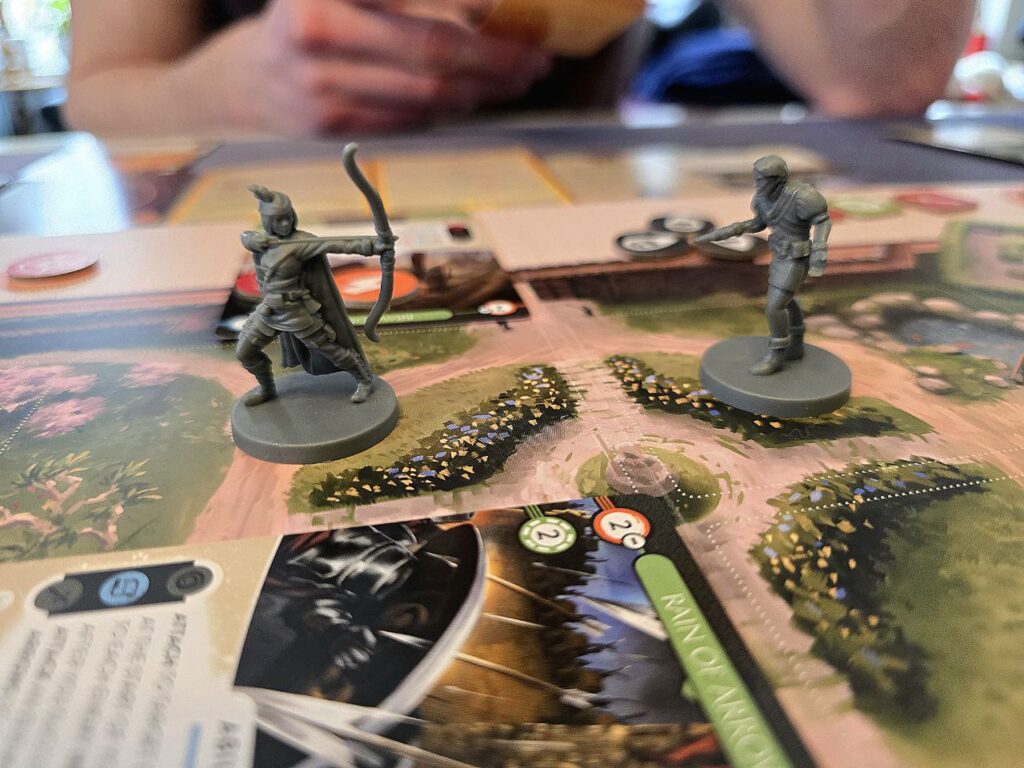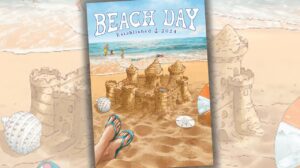Disclosure: Meeple Mountain received a free copy of this product in exchange for an honest, unbiased review. This review is not intended to be an endorsement.
Unique Deck Building and Dueling
The tabletop world is currently entrenched in a golden age of dueling battle systems. Among titles like Unmatched, Dice Throne, Summoner Wars, Star Wars: Epic Duels, Wildlands, and Guilty Gear Strive, we now enter Ivion. I previously covered one set from the inaugural season of Ivion, titled Ivion: The Sun and the Stars. This latest box is one of three in the newest, third season of Ivion, named Crossroads. This set features The Snake—a slimy aristocrat exploiting the kingdom through any means necessary—against The Falcon, a madam Robin Hood and master archer, set on correcting the injustices of the realm.
Each core set includes two fighters, each with unique starter decks. The game also features advanced cards that can later be added through the “hero-crafting” system—a system that lets players customize and upgrade decks by mixing archetypes and playstyles. Ivion can be expanded to accommodate up to four players with additional sets.

Core System
The base principles of the system remain largely the same as with previous characters, but have been further enhanced in complexity with each subsequent set. Ivion is played in turns until one hero loses all their health and is defeated. The arena board is a 4×4 grid, with each hero starting in opposite corners. Players begin with three standard actions per turn, which can be used to move, attack, trigger abilities, generate resources, or manipulate the board state.
Cards often generate resources such as power, initiative, or actions, which can be spent on subsequent cards to resolve various effects. Some cards have a range requirement and can only be played if the enemy is within a specific number of spaces. Others can add “control” tokens to the opponent, preventing them from playing certain card types until those tokens are removed. Some cards can even be played as obstacles—placed directly on the board and triggering effects based on player proximity.
Each hero plays differently and requires the player to lean into their specific strategy to gain the upper hand. Heroes also begin the game with unique trait cards that offer usable abilities, permanent modifiers, or rule changes. Resource and hand management are critical, as players don’t automatically draw new cards each turn.
Once a player’s initial health pool is depleted, they flip their health tracker, entering a “last stand.” This grants an extra card draw (and may trigger some abilities) and replenishes health at a reduced amount. May the strongest hero survive!

Trap Setting or Arrow Crafting?
Ivion: The Falcon and The Snake is a significant improvement over older sets, adding more complexity to the broader Ivion system. Both heroes offer distinct yet somewhat parallel playstyles, requiring knowledge of both to achieve victory. The Snake fights up close with low-cost, small-damage attacks, while The Falcon prefers a ranged approach and crafts arrows from a special, separate arrow deck. Much like previous sets, spatial positioning is key, as the two heroes’ ranges are essentially opposites. The game often becomes a tense cat-and-mouse chase across the board to get into position for attacks and abilities.
We found both heroes to be evenly matched despite their completely contrasting battle styles. The Snake is a blast to play, with mechanics focused on setting traps around the board, limiting The Falcon’s mobility. His primary attribute is the poison mechanic. Though there is a max stack, it adds a “death by a thousand cuts” drain over time. His attacks are also low-cost, allowing for extended combos in a single turn. His cunning also allows him to steal cards from the opposing hero, using their own tactics against them.
The Falcon’s playstyle is a bit more complex, but just as fun. The real joy comes from crafting arrows using a separate arrow deck. These two decks make up the “arrowhead” and “feather” components of the arrow. When paired, these arrows can be highly lethal or tactical, allowing for massive damage or healing. Her deck also introduces interesting situational play, where cards with the precise keyword can only be played if the hero is exactly in the specified range.
This set also introduces the luck keyword—a mechanic that rewards you when opponents attack. The new season adds even more, including a “free-for-all” mode that allows for chaotic arena battles.
I felt the rules reference and “Learn to Play” guide in this set are much smoother and easier to understand. There’s even a notable improvement in the components, with differently shaped tokens that are easier to distinguish on a player’s board. It seems the folks at Luminary Games listened to feedback and addressed many issues from the earlier sets. The new season also expands the “hero-crafting” system, adding new classes such as Yeoman, Brigand, and Peasant.
Though the game adds more complexity, I suggest that new players start with Season Three sets. It seems the growing pains from the original sets are over, and Ivion is more accessible now than ever. It still delivers a Magic: The Gathering feel in a self-contained box, and it’s the perfect time to jump in.












Add Comment